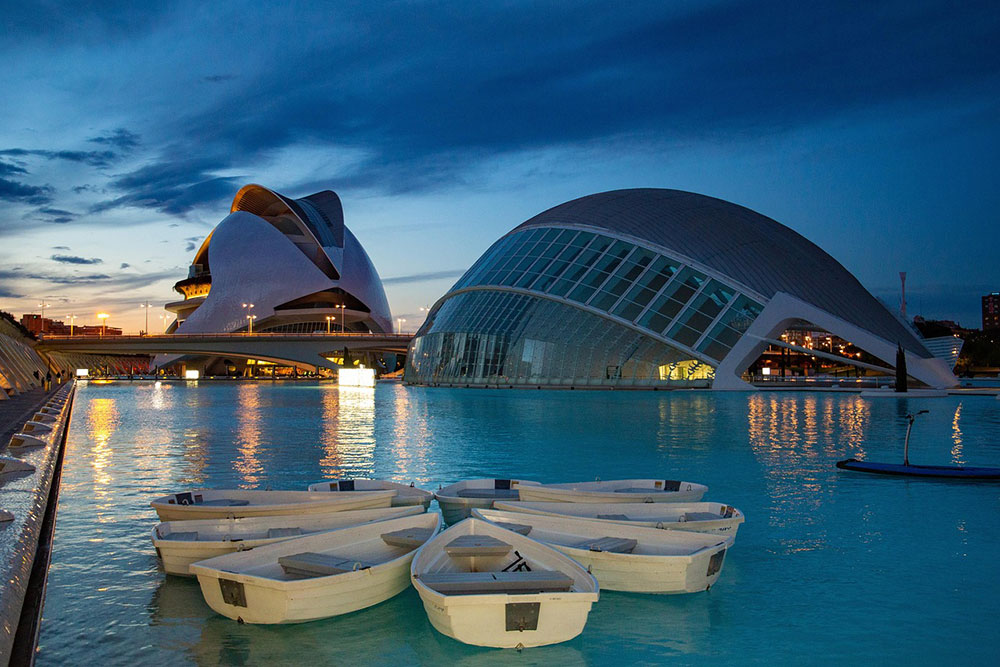

Valencia, Spain

San Carlos de la Ràpita, Catalonia, Spain

Cambrils, Taragona, Spain

Barcelona, Catalonia, Spain
Leaving Dénia, we sail northward along the Costa Blanca, a stretch of coast known for its golden beaches, rugged headlands, and charming towns. The waters here are calm and inviting, making for an enjoyable passage with plenty of opportunities for coastal exploration. The first major stop is Valencia, Spain’s third-largest city and a fascinating blend of old and new. Entering the port, we’re greeted by the city’s modern skyline, dominated by the futuristic buildings of the City of Arts and Sciences, designed by renowned architect Santiago Calatrava. Valencia’s marina is well-equipped, offering a great base to explore the city’s historic center, home to landmarks like the Valencia Cathedral, the Lonja de la Seda (a UNESCO World Heritage Site), and the bustling Mercado Central, one of Europe’s oldest and largest markets. Valencia is also the birthplace of paella, making it the perfect place to indulge in this famous dish.
From Valencia, we continue north along the Costa del Azahar, or "Orange Blossom Coast," named for the fragrant orange groves that line the shore. The sailing here is relaxed, with long stretches of sandy beaches and rolling hills in the background. Our next stop is San Carlos de la Rápita, a peaceful coastal town located on the southern edge of the Ebro Delta Natural Park. This vast wetland is one of Spain’s most important ecological reserves, home to hundreds of bird species and a haven for nature lovers. The calm waters of the delta offer sheltered anchorages, and the town itself is known for its fresh seafood, particularly oysters and mussels farmed in the nearby waters.
Continuing along the coast, we reach Cambrils, a charming fishing village that has grown into a popular seaside destination without losing its traditional character. Cambrils is often called the "gastronomic capital" of the Costa Dorada, with numerous restaurants specializing in fresh, local seafood. The marina here is a great place to rest and enjoy a more relaxed pace before heading to one of the most exciting stops on this part of the voyage, Barcelona.
Barcelona needs no introduction. As we approach the city, the iconic skyline comes into view, with landmarks like the Sagrada Família, the Torre Glòries, and Montjuïc Hill. The city’s main marina, Port Vell, is right in the heart of the action, offering easy access to the historic Barri Gòtic, the bustling La Rambla, and the trendy neighborhoods of El Born and Gràcia. Barcelona is a cultural powerhouse, known for its art, architecture, and vibrant nightlife. Exploring Gaudí’s architectural masterpieces, such as Park Güell and Casa Batlló, is a must, as is sampling local Catalan cuisine and tapas in one of the city’s many markets and restaurants.
After the buzz of Barcelona, the final leg of this part of the voyage takes us north along the Costa Brava to Palamós, a quieter and more laid-back destination. Palamós is a charming fishing town with a rich maritime history. Its well-protected harbor is home to a small but active fishing fleet, and the town is famous for its gambas de Palamós, red prawns considered a delicacy in the region. Palamós also offers beautiful beaches and excellent hiking trails along the rugged coastline of the Cami de Ronda, with stunning views of hidden coves and turquoise waters.
